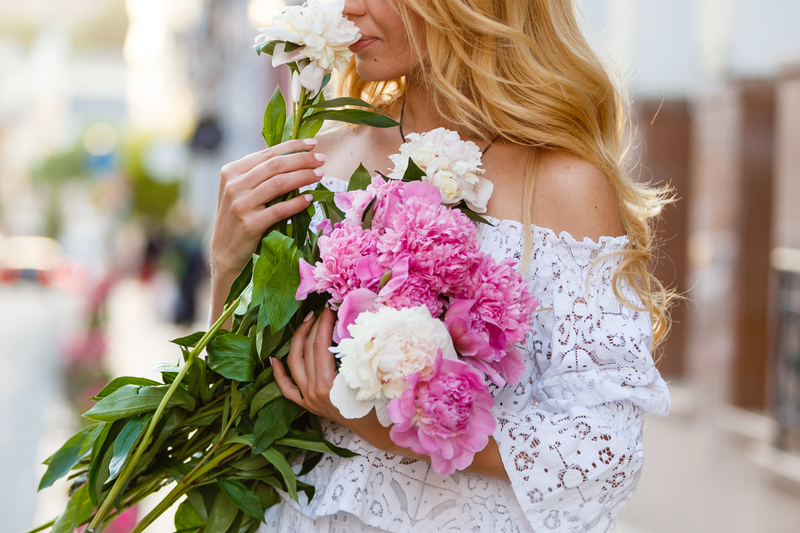Mastering the Art of Cut Flower Care
Posted on 22/08/2025
Mastering the Art of Cut Flower Care: Comprehensive Tips for Longer-Lasting Blooms
Flowers have a remarkable way of brightening up any space, infusing it with color, fragrance, and a touch of natural beauty. However, the fleeting nature of cut flowers often leaves enthusiasts searching for ways to extend their vibrance and longevity. Mastering the art of cut flower care is essential for anyone who wants to get the most out of their floral arrangements--be it for home decor, special events, or thoughtful gifts.
In this comprehensive guide, we'll delve deep into cut flower care techniques, explore the science behind keeping bouquets fresh, and highlight the best practices for extending the vase life of your favorite flowers. Whether you're a gardening novice or a seasoned florist, the following tips will help you preserve the beauty of your blossoms for as long as possible.
Understanding the Science of Fresh Cut Flowers
To truly master the art of cut flower care, it's important to understand what happens to flowers once they are cut. Upon harvesting, blooms are separated from their primary water and nutrient source--the parent plant. As a result, they are more susceptible to dehydration, bacteria, and wilting. Addressing these vulnerabilities is the key to keeping your cut flowers fresher for longer.
What Affects the Vase Life of Cut Flowers?
- Water Uptake: Blockages in stems, either from bacteria or air embolisms, impede the flower's ability to draw water.
- Temperature: High temperatures accelerate transpiration and wilting, while cool conditions help extend freshness.
- Bacteria: Microorganisms in water can clog stems and cause decay.
- Flower Type: Some flowers naturally last longer than others (e.g., alstroemeria vs. tulips).
- Exposure to Ethylene Gas: Emitted by ripening fruit and decaying vegetation, ethylene speeds up aging in flowers.

Essential Steps Before Arranging Cut Flowers
Preparation is the first and most important step in flower care for cut blooms. The actions you take right after cutting or receiving flowers are crucial for maximizing longevity.
1. Select the Freshest Flowers
- Choose buds just starting to open for a longer display period.
- Inspect stems and leaves for signs of browning or damage.
2. Trim Stems the Right Way
- Always trim stems at a 45-degree angle under clean, lukewarm water. This increases surface area for water uptake and prevents air bubbles from entering the stem.
- Remove at least 1 inch (2.5 cm) from each stem upon arrival and each time you change the water.
3. Remove Foliage Below the Waterline
- Strip any leaves that would be submerged in the vase to minimize bacteria growth and murky water.
4. Use Clean Vases and Tools
- Wash vases with hot soapy water and disinfect with diluted bleach or vinegar to start with a bacteria-free environment.
- Ensure floral scissors or knives are sharp and clean to prevent stem crushing.
Perfecting the Flower Water Recipe
The water you use can make a huge difference in the lifespan of your arrangement. Mastering the art of flower arrangement means understanding what helps flowers thrive after being cut.
What Goes Into the Ideal Flower Solution?
- Fresh, room temperature water: Lukewarm water is ideal for most flowers, except for bulb varieties (e.g., tulips, daffodils), which prefer cold water.
- Floral preservative: Commercial flower food contains ingredients for nutrition, pH balancing, and bacteria control.
- DIY alternatives: Add 1 teaspoon sugar, 1 teaspoon white vinegar, and a few drops of bleach per quart of water for an effective homemade preservative.
Arranging and Displaying for Maximum Beauty and Freshness
How you arrange and display your cut flowers will directly affect their freshness and aesthetic value. Here's how to ensure your bouquet looks fantastic and lasts as long as possible:
Location, Location, Location
- Keep flowers cool: Display arrangements away from direct sunlight, heat sources, and drafts.
- Prevent ethylene exposure: Avoid placing arrangements near ripening fruit or vegetables.
- Use clean, spacious vases: Crowded stems can accelerate bacterial growth and impede proper hydration.
Proper Arrangement Techniques
- Group flowers by type or color for eye-catching displays and easier maintenance.
- Support delicate stems with firmer varieties or floral wire.
- Use floral foam only if necessary--water is generally preferred for maximum hydration.
Ongoing Care: Daily Maintenance for Cut Flower Longevity
One of the most important aspects of cut flower care tips is daily maintenance. Flowers are living things, even after being cut, and they require consistent attention to remain in peak form.
Daily and Regular Care Checklist
- Change the water every 2 days or sooner if it appears cloudy.
- Trim the stems each time you change the water (about 1/2 inch or 1 cm).
- Remove wilting flowers promptly to prevent the spread of bacteria to healthy blooms.
- Replenish flower food or your homemade preservative with each water change.
- Mist delicate flowers (like orchids and hydrangeas) with water to retain moisture.
Specialized Tips for Popular Cut Flower Types
Different flowers have unique needs. Mastering the art of cut flower care also means adjusting your routine based on the flower varieties in your arrangement. Here are care highlights for some of the most beloved types:
Roses
- Remove all thorns and leaves below the waterline.
- Make cuts under water to prevent air embolism.
- If heads droop, submerge entire stems and heads in warm water for 30 minutes to revive.
Tulips
- Keep tulips in cold water and out of direct sunlight.
- Keep stems upright with a tall vase to prevent drooping.
- Re-cut stems daily as they continue to grow even after cutting.
Lilies
- Remove pollen to prevent staining and prolong life.
- Lilies prefer lukewarm water and minimal foliage submerged.
Hydrangeas
- Cut stems at a sharp angle and split the bottom for extra water uptake.
- Misting the blooms daily helps keep them full and vibrant.
Sunflowers
- Use tall, sturdy vases to support heavy heads.
- Change water daily and keep away from fruit to avoid ethylene exposure.
Common Mistakes to Avoid in Cut Flower Care
Even seasoned flower lovers can make mistakes. Here are the top pitfalls to steer clear of when caring for your cut flowers:
- Using dirty vases or tools that introduce bacteria.
- Neglecting to remove foliage below the waterline.
- Forgetting to change water regularly, leading to bacteria build-up.
- Placing flowers in direct sunlight or near heat sources, causing premature wilting.
- Assuming all flowers have the same care requirements--see our specialized tips above!
Eco-Friendly and Long-Term Flower Care Practices
If you're passionate about cut flower care, you can adopt more sustainable and eco-friendly practices:
- Choose locally grown and seasonal flowers, which are fresher and have a smaller carbon footprint.
- Upcycle spent blooms into potpourri, pressed floral art, or compost them for garden enrichment.
- Use organic or natural preservative alternatives, such as apple cider vinegar, lemon juice, or a drop of vodka for their antibacterial properties.

Frequently Asked Questions About Caring for Cut Flowers
How do I revive wilted cut flowers?
Cut 1-2 inches off the stems at an angle and place them in warm, clean water. For some species like roses, submerging the entire flower head and stem in water for 30 minutes can aid revival.
Is it better to use cold or warm water for flowers?
Most fresh cut flowers prefer lukewarm or room-temperature water, except for bulb flowers (like tulips) that do better in cold water.
How long do cut flowers typically last?
Vase life depends on flower type and care but most last from 5-14 days. With proper care, some hardy varieties (e.g., carnations, chrysanthemums, alstroemerias) can last up to 3 weeks.
Conclusion: Elevate Your Floral Experience
With intention and proper technique, mastering the art of cut flower care is achievable for anyone. Whether you're working with a single stem or an elaborate arrangement, implementing these expert tips will help you enjoy vivid, long-lasting blooms throughout your home or event space.
Remember: freshness starts with preparation, thrives with ongoing care, and lasts through attention to detail. Share your love for flowers responsibly, keep learning, and witness the transformation of your bouquets into living masterpieces!
Ready to Take Your Cut Flower Care to the Next Level?
Join online communities, follow professional florists, and keep experimenting with new techniques to truly master the art of keeping cut flowers fresh. Happy arranging!
- Fresh blooms are just a few steps away--try these tips today and see the difference!
- Share your cut flower triumphs and tips in the comments--let's inspire each other!
Latest Posts
Discover the Best Low Maintenance Office Plants
Mastering the Art of Cut Flower Care
Discover the secrets of hydrangea care





